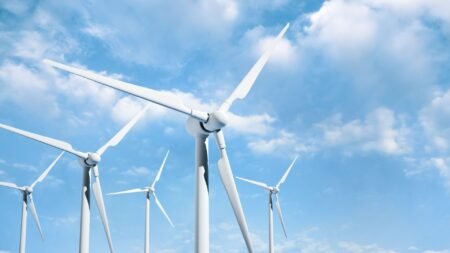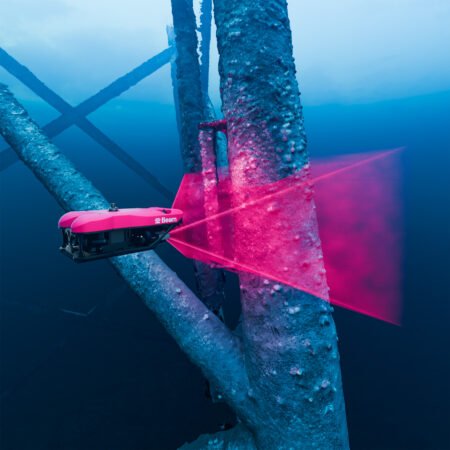The recent change in government has brought about a significant change in the direction of energy policy, one which is far more supportive of renewable energy generation. In contrast to the previous administration, the new Labour government views the deployment of renewable energy and supporting technologies as essential for energy security as well as meeting net-zero targets. Building on a key pillar of its manifesto, the government has wasted no time in changing policy, consenting large schemes and generally talking up the sector.
One of the most significant changes has been July’s Policy statement on onshore wind, along with the government’s draft revisions to the National Planning Policy Framework (NPPF), a consultation on which has recently concluded. Removing the footnote in the NPPF which had put onshore wind on an uneven footing compared with other renewable technologies has removed a significant barrier to turbine installation.
The government has also committed to a target of doubling onshore wind capacity from 15GW to 30GW by 2030. Most of this capacity is likely to come from Scottish projects and repowering projects in England by upgrading existing sites. However, this policy change also presents an opportunity for sites with high energy use, enabling them to generate energy locally, making long-term energy cost savings and supporting energy security.
Sites can install a turbine onsite or nearby which connects directly into the building to provide energy. These turbines often range from 200kW to 4MW. Sizing will be driven by energy demand, planning considerations and grid capacity, depending on how much energy is likely to be exported. The renewable energy will offset consumption from the grid which can often equate to 20-25p/kWh in the current market. Any energy that is not used can be exported to the grid for a lower price of 7-9p/kWh through an export power purchase agreement (PPA).
Site owners should note that sites which have previously been discounted may now be viable, as a result of the advances in technology and increased means of mitigating issues relating to radar and aviation.
High-energy users have often already installed some solar PV at their sites, but energy output naturally peaks during the summer months. Wind turbines, on the other hand, generate electricity all year round but mostly during the winter months. As a result, a turbine can complement an existing solar installation on such sites.
Battery storage can also complement wind turbines, storing excess energy generated onsite to be used later. While battery storage costs have, and continue, to come down, they are still high. As a result, it is important to consider whether a battery is really required on a project-by-project basis. The main drivers for using batteries on site are where maximising onsite usage of renewable energy is key, potentially due to energy security or other ESG targets, and where there are restrictions on available grid capacity, which results in minimal or no export being available.
As with all renewable energy generation, the resources available vary by location and one of the first stages with any wind project is to understand the local wind speeds. Once these are known, then it is possible to understand the business case in more detail. For example, a 1MW turbine can generate 2,500 – 3,000 MWh annually (depending on wind speed). Typical costs of £1.2m – £1.4m per MW will vary as a result of the logistics of delivery, any planning mitigations and ground conditions. The payback period is highly dependent on energy consumption but the more that is used onsite, the quicker the payback. An export PPA can be arranged for any electricity which is exported, but the turbine should ideally be sized to minimise export.
While the recent policy change means that onshore wind is again on a level footing with other types of renewable energy generation, turbines still need to pass through the full planning application process. There is no longer the potential for a single objection to derail a wind project, rather the local authorities need to take local opinion into account while assessing the overall value of development. They must also be supported by the necessary surveys, studies and planning case. There is a wide range of constraints which can impact a turbine development and these must be assessed at the outset. One example is nearby residential developments and appropriate clearance distances from paths and roads. One of the benefits of installing wind schemes near a building with high energy use and connecting directly into the building is that it presents a clear rationale for the turbine to be at that location, which can greatly help with building the case with the planning authority.
With a much more positive approach to onshore wind being taken by central government, we see huge potential for companies to take advantage of the opportunity to install a wind turbine at their sites. This will allow buildings to generate their own renewable energy with the potential for considerable savings on energy costs to drive a quick payback on this investment.
Share your industry press now!
Are you a PR agency or sustainability-focused organization? Join the World of Renewables network FREE today and gain exclusive access to our platform to promote your business, share the latest industry news, and connect with a global audience of 700,000+ renewable energy professionals.
Register Now to start posting your updates and showcase your expertise to a highly engaged, environmentally-conscious community.
Find out more about our Content Partnership Programs.*2024 AWARD WINNER* Websites & Mobile Sites, Webby Winner, Peoples Voice 2024





















2 Comments
Great article 👍
I agree